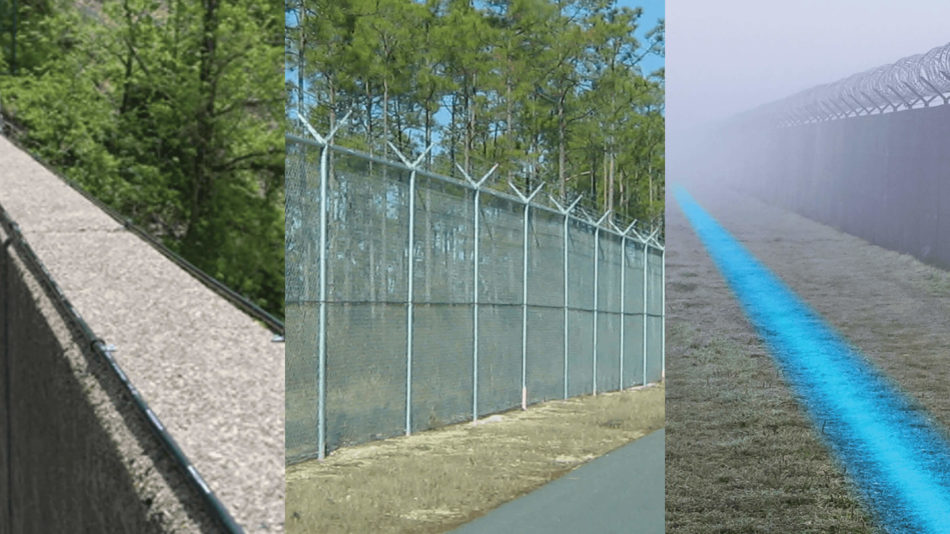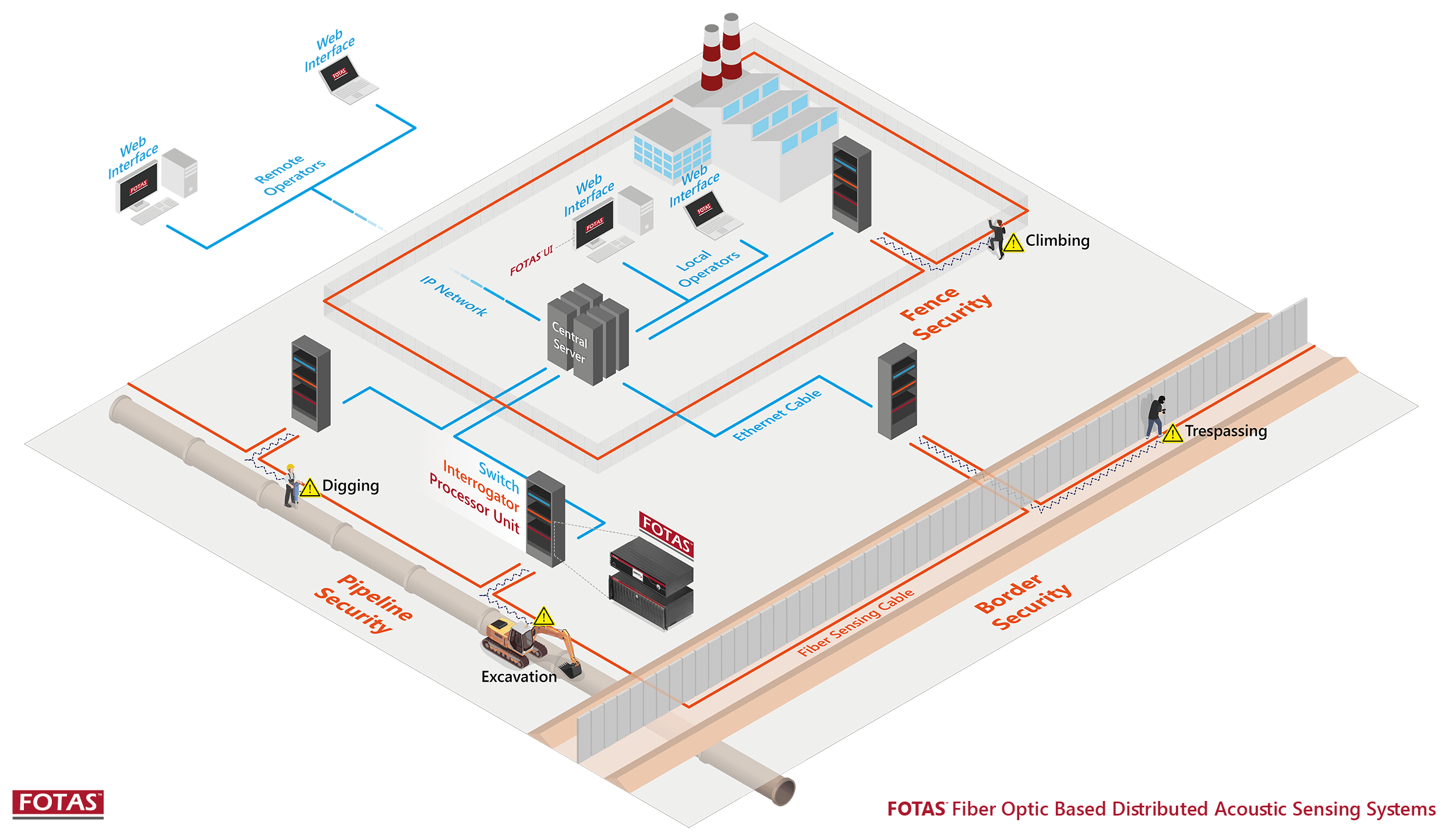Why Fiber Optic Protection Equipments Are the Future of Security
The transition to fiber optic safety systems notes a substantial development in the realm of protection, driven by their outstanding information transmission abilities and strength to outside interferences. These systems not only facilitate faster and much more dependable interaction however also present a cost-efficient remedy with reduced upkeep needs. As the landscape of security develops alongside emerging technologies such as AI and IoT, the possibility for fiber optics to enhance and redefine protection infrastructures ends up being increasingly apparent. The ramifications of these advancements elevate critical concerns concerning the future of protection steps and their efficiency in an ever-changing atmosphere.
Benefits of Fiber Optic Systems
One of the key benefits of fiber optic systems is their superior bandwidth capacity, which helps with the transmission of large volumes of data over cross countries without significant loss. This characteristic is particularly useful for protection applications that require the continual monitoring and transfer of high-def video clip feeds, sensing unit data, and various other vital info. Optical fiber can accommodate the expanding needs of modern safety and security systems, guaranteeing that information continues to be undamaged and trustworthy.
Additionally, fiber optic cords are less at risk to electro-magnetic interference, which can be a considerable concern in atmospheres with various electronic gadgets. This resistance improves the honesty of the information being transmitted, consequently decreasing the threat of data violations or system failures. Fiber optic systems are inherently more protected than typical copper wires, as tapping right into a fiber optic line without detection is exceptionally challenging.
The longevity of fiber optic wires likewise adds to their appeal. They are resistant to ecological aspects such as wetness and temperature changes, minimizing maintenance prices and increasing system longevity. Generally, these benefits placement fiber optic systems as a robust and reliable choice for modern security facilities, making certain reliable and safe information transmission.
Improved Information Transmission Speed

The ability to transmit vast amounts of data quickly assists in the seamless integration of high-definition video feeds and advanced analytics. Safety systems can now process and analyze info in real-time, improving reaction times and situational recognition. In addition, fiber optic links support longer transmission distances without deterioration of signal quality, making them excellent for extensive security networks.
The enhanced speed of fiber optic systems not just improves the effectiveness of protection procedures however also decreases latency. This is particularly vital in essential scenarios where prompt decision-making can avoid safety breaches or minimize potential dangers. As companies proceed to focus on safety and security and effectiveness, the demand for rapid and reputable information transmission will unquestionably solidify fiber optic systems as a cornerstone of modern-day safety infrastructure.
Resistance to Interference
Fiber optic protection systems continually show outstanding resistance to electromagnetic interference, a critical advantage in atmospheres susceptible to digital sound. Unlike conventional copper wires, which can be negatively affected by magnetic fields, superhigh visite site frequency interference, and various other types of electric disruption, fiber optic wires use light to send information. This fundamental property ensures that the signals remain clear and unchanged, despite bordering electronic activity.
Making use of glass or plastic fibers in fiber optic modern technology creates an obstacle against disturbance, permitting for reputable data transmission also in tough scenarios such as industrial facilities, city locations with high digital traffic, or locations near radio towers. This particular dramatically minimizes the chance of signal degradation or loss, making fiber optic systems specifically ideal for safety and security applications where honesty and precision of data are critical.
Moreover, this resistance to disturbance improves the total performance and integrity of security systems, making certain that tracking and sharp systems work flawlessly. In a globe where protection is significantly endangered by advanced modern technologies, the durability of fiber look these up optic systems attracts attention as a pivotal feature, enhancing their standing as a necessary element of modern-day protection facilities.
Cost-Effectiveness Over Time
Considerable price savings can be accomplished in time with the execution of fiber optic protection systems. While the preliminary investment might appear higher contrasted to conventional copper-based systems, the long-term financial advantages emerge with minimized operational and maintenance prices (fiber security). Fiber optic cable televisions are inherently extra long lasting and much less susceptible to ecological elements, which translates to lower replacement and repair work expenditures over their life expectancy
Moreover, fiber optic systems require less power to operate, which further reduces power expenses. Enhanced data transmission abilities permit fewer repeaters and amplifiers, minimizing tools financial investment and streamlining installment processes. The scalability of these systems also contributes to cost-effectiveness, as organizations can expand their safety and security infrastructure without incurring significant added expenditures.
An additional factor to consider is the raised efficiency in surveillance and feedback capabilities that fiber optics provide. Enhanced real-time data transmission can lead to quicker event action times, potentially mitigating losses and obligations connected with safety and security breaches. Altogether, the long-term advantages of fiber optic protection systems not only validate the first expense however additionally position them as a monetarily sensible selection for organizations looking for robust defense remedies.

Future Innovations in Safety And Security
Advancing technologies are readied to change security systems, incorporating expert system (AI) and equipment knowing to enhance danger discovery and feedback capabilities. These technologies will certainly allow safety systems to assess substantial amounts of data in real-time, recognizing patterns and anomalies that suggest potential dangers. This positive approach will allow much faster decision-making and extra effective case responses.
Additionally, the incorporation of the Net of Things (IoT) is paving the way for interconnected security gadgets, using extensive security and monitoring. Smart sensors can pass on info concerning environmental changes, while automated notifies can inform safety employees quickly of questionable tasks.
Moreover, the evolution of biometric technologies will additionally reinforce security mechanisms. my link Face recognition, finger print scanning, and retina identification are becoming much more sophisticated, providing layers of authentication that are challenging to bypass.
Final Thought
Finally, fiber optic safety and security systems represent a substantial advancement in security technology, providing unequaled data transmission rate, resistance to electro-magnetic disturbance, and long-lasting cost-effectiveness. As the demand for advanced safety services continues to expand, the combination of fiber optics with arising technologies such as AI, IoT, and biometrics will certainly even more boost security frameworks (fiber security). The combination of these technologies will guarantee a much more secure and receptive environment, strengthening optical fiber as a foundation of future safety and security systems